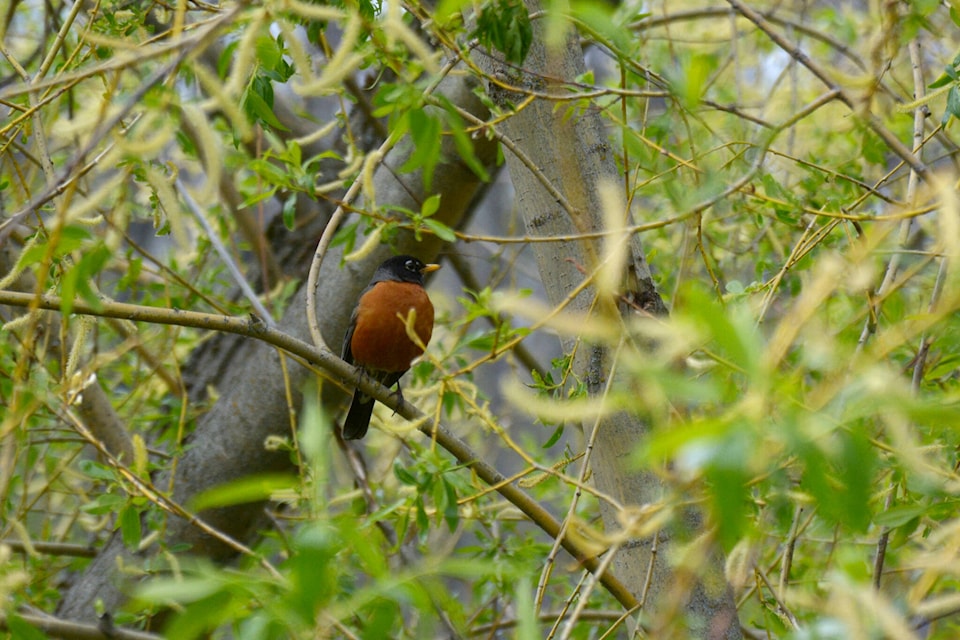By Ed McMackin, biologist by profession and naturalist by nature
Have you heard the American Robins are back? In fact, they have been back to the Kootenay Lake – Creston region, for a couple of months. Actually, some of the robins never left. They are what are sometimes referred to as resident robins. They don’t leave for the winter. As long as there is food, such as fruit and/or berries, and water available, they stay around all year.
These don’t fit the description of the American Robin (Turdus migratorius) as being a migratory species. Most robins, though, are migratory, nesting in the far north. Then in late summer and fall, they migrate to warmer areas where the water doesn’t freeze over and there is shelter from winter blasts. The robins from northern areas are somewhat lighter and smaller than the resident robins. The resident females are somewhat lighter in colour, like the northern robins, than the resident males. In autumn, and again in the spring, northern robins migrate through in little flocks.
The American Robin is called just that because its primary range is North America. It was dubbed “robin” by homesick settlers who thought it similar, by a stretch of the imagination, to the familiar “English robin” of their homeland. The American Robin is part of the Thrush Family. The young have speckled breasts. The English, or European Robin (Erithacus rubacula), is actually in the Flycatcher Family (Muscicapidae) and have on only one occasion been seen in North America.
With the return of our local robins, from the south, their warbler-like song pervades the early morning and evening menagerie of bird songs and calls. Their arrival makes people say, “Spring is here”. Once, in the fall, I heard a male robin singing in the rain. In the spring and early summer, they are known to sing in the night, giving only snatches of their call. They are probably half asleep.
With all the nice things robins bring on their arrival, there are some things that may be not so pleasant or hard to understand.
Robins have been known to nest in the same location year after year. In one instance, this robin pair built on top of the previous nest for five consecutive years, making quite a mess on the building. Robins sometimes lose track. One robin attempted to build nests on five different rafters, never finishing any of them.
Probably, the most undesirable robin-contribution is banging against a window when it mistakenly sees another robin in the reflection. Once they start doing that they seem to never quit unless the window is totally covered. A white sheet helps and some times netting. The female usually does this while the male perches in a tree nearby, watching this whole performance day after day and week after week.
Robins weren’t originally part of the prairie landscape. As settlers on the prairies built homes and planted trees surrounded by well-watered lawns the robins settled in too. As a result of the habitat change, robins of the east “connected” with western robins. A similar scenario took place with some other bird species, such as flickers, the red-shafted and the yellow-shafted.
All in all, robins are a pleasant addition to the spring and summer seasons.
READ MORE: Out There: Bird homes and habits
